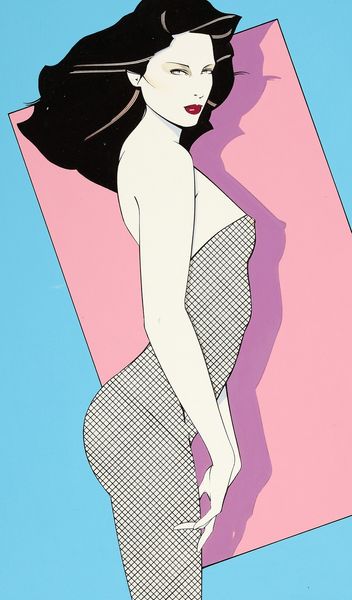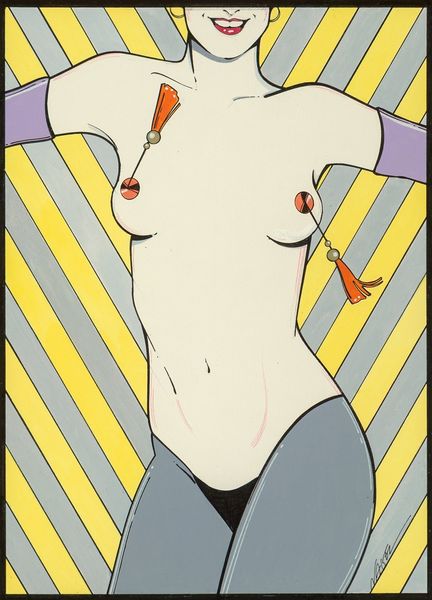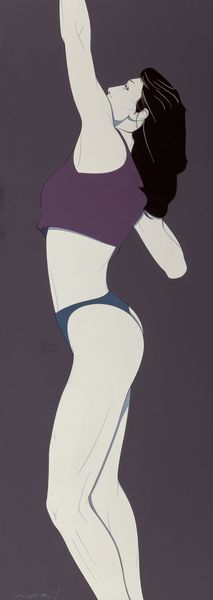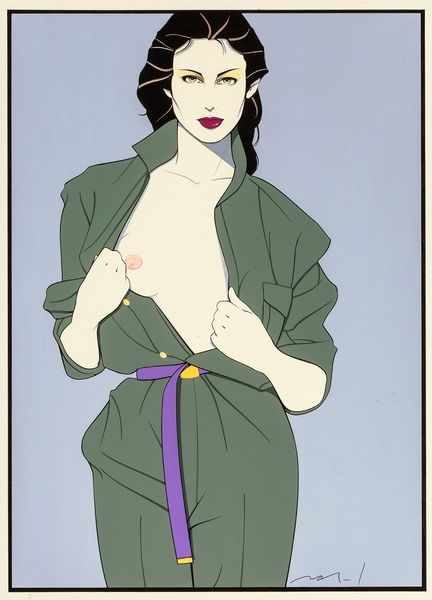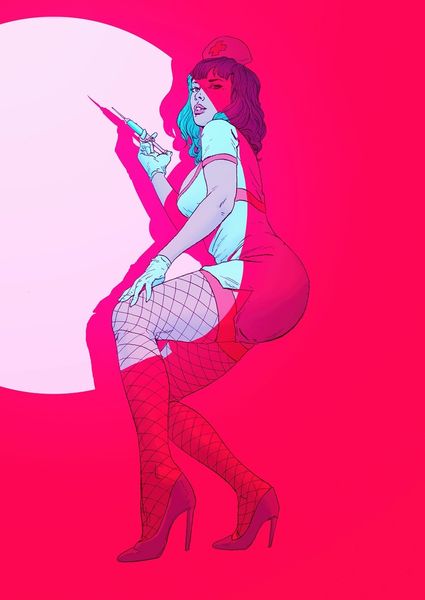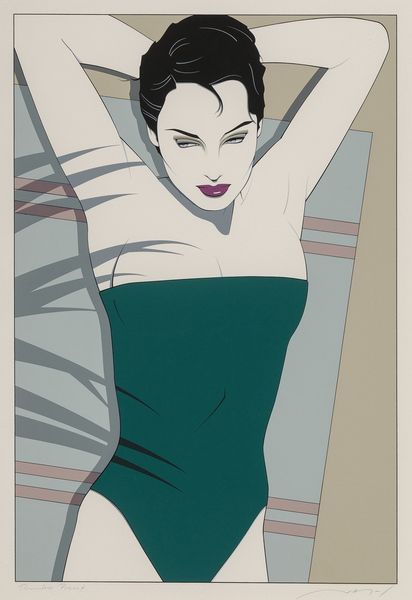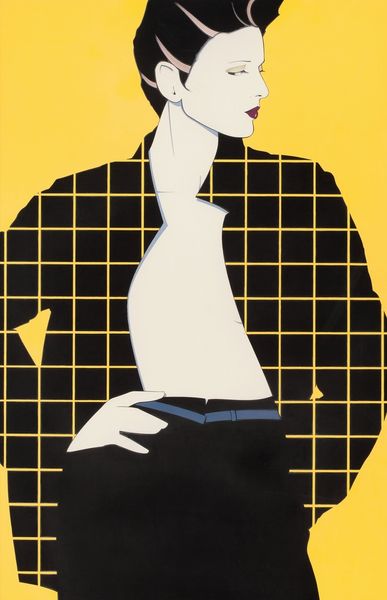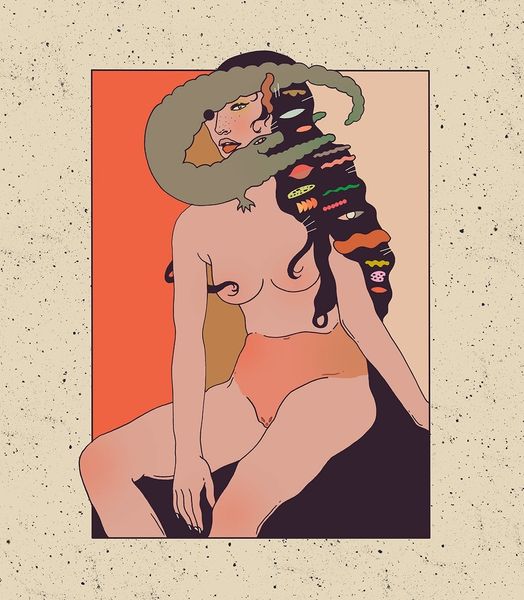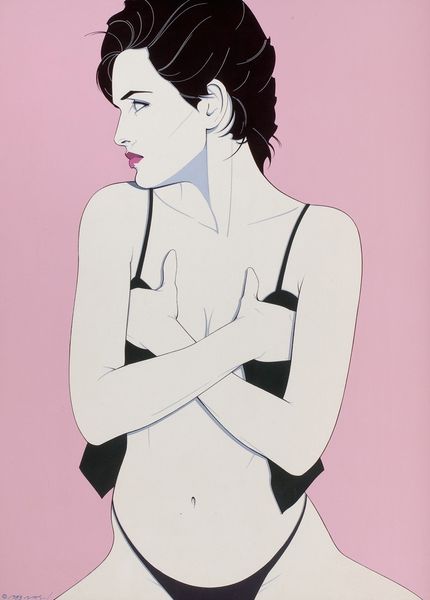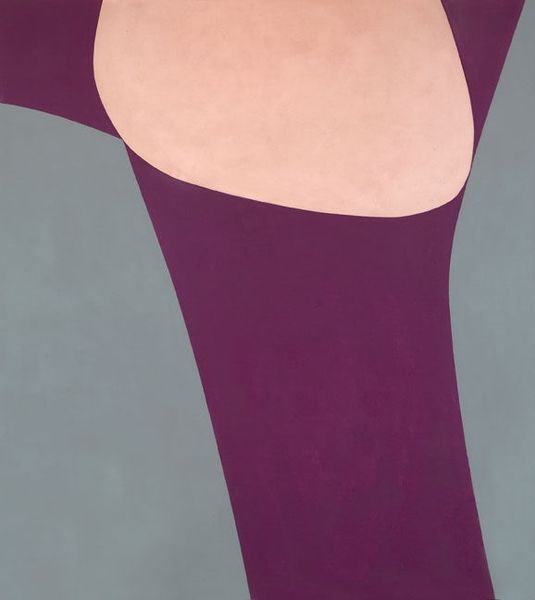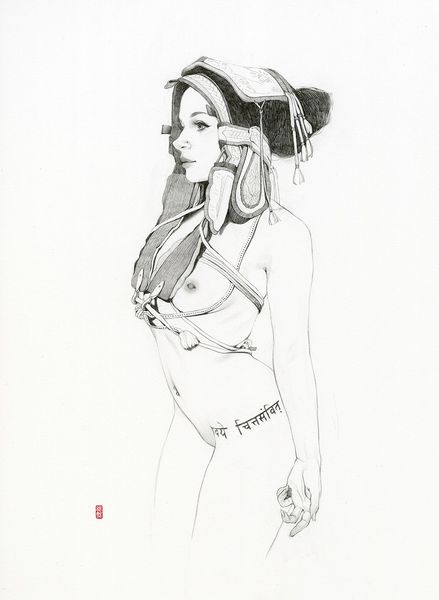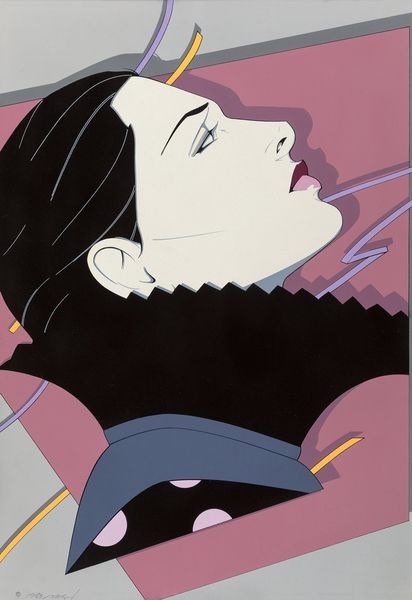
acrylic-paint
#
portrait
#
pop art-esque
#
cartoon like
#
cartoon based
#
vector art
#
caricature
#
acrylic-paint
#
figuration
#
flat colour
#
vector illustration
#
pop-art
#
comic style
#
cartoon style
#
cartoon theme
#
erotic-art
Copyright: Modern Artists: Artvee
Curator: Welcome to the exhibition. Here we have an illustration initially created for Playboy by Patrick Nagel. It looks like it was rendered using acrylic paint, although his pieces were eventually also digitally reproduced, expanding their accessibility. Editor: Immediately, the visual starkness hits you. It’s so sleek, almost industrially precise, and that bright yellow backdrop intensifies everything. I’m sensing a powerful interplay of overt sexuality and an almost cold detachment. Curator: Nagel's illustrations were known for their graphic style. I'd love to dive into his technique—that distinct use of flat colors and bold outlines. There's almost a commercial efficiency in how the female form is rendered here, and that has resonance considering this piece was created for and consumed within a magazine. Editor: Absolutely. We have to remember where this image was situated within Playboy. While seeming to push boundaries, it also catered to the male gaze. Consider how Nagel flattens and idealizes the female form, presenting her almost as a glamorous mannequin—removing elements of individuality or realistic depiction that don’t fit a hyper-aestheticized vision. It sparks questions about women, consumerism, and art commodification within that very specific social context. Curator: Right, and beyond content, how does the piece function? Notice how Nagel eliminates much of the typical texture and shading. That speaks volumes about accessible means of reproduction. High resolution for prints in the magazine pages had different needs, and that directly influences how he rendered form and created these very defined visual planes. Editor: Thinking about audience expectations for Playboy in that period— late '70s to early '80s— Nagel's imagery likely played a critical role in shaping ideals of femininity and beauty. The woman, gazing back at us here, holds a position of power through allure. Still, what sort of social narratives are these visuals reinforcing? It’s so interesting to deconstruct that now, with our contemporary insights around feminism and the construction of sexual power. Curator: Indeed, these flat graphic planes facilitated reproducibility and dissemination on a wide scale, while the limited palette controlled production costs, making them more attainable and accessible in terms of consumption. And perhaps by embracing streamlined modes of production Nagel inadvertently mirrored, or even satirized, the mass consumerism inherent in magazines. Editor: Reflecting on it now, Nagel's piece, originally a consumable magazine item, creates an incredible tension of sex, production, and cultural expectation. Curator: The tension, which you point out is so evident when observed using Nagel’s efficient but sleek artistic practices, also provides avenues for re-interpretation through contemporary methods of image-making and modes of art.
Comments
No comments
Be the first to comment and join the conversation on the ultimate creative platform.
